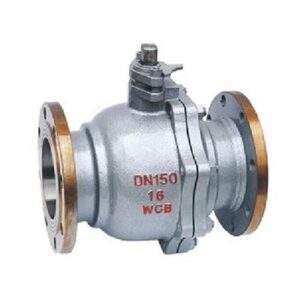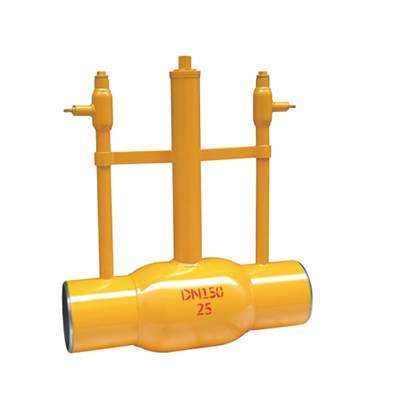Welcome to My Blog!
Before we dive into the content, I’d love for you to join me on my social media platforms where I share more insights, engage with the community, and post updates. Here’s how you can connect with me:
Facebook:https://www.facebook.com/profile.php?id=61563865935136
Now, let’s get started on our journey together. I hope you find the content here insightful, engaging, and valuable.
Introduction

Ball valves are essential components in various industrial and residential applications, providing reliable flow control. Their simple design and effective sealing capabilities make them a popular choice for managing liquids and gases. Understanding the intricacies of ball valves, including their types, materials, and applications, is crucial for optimizing flow control and ensuring system efficiency. This guide aims to provide a comprehensive overview of ball valves, helping you make informed decisions for your specific needs.
Understanding the Basics: What Are Ball Valve?
Ball valves are quarter-turn valves that utilize a hollow, perforated ball to control flow. Rotating the ball 90 degrees aligns the hole with the flow path, allowing fluid or gas to pass through. When the ball is rotated another 90 degrees, the solid portion blocks the flow, effectively shutting it off. This simple mechanism offers quick and efficient flow control, making ball valves a versatile solution for numerous applications.
Key Components of High-Performance Ball Valve
Several components contribute to the performance and reliability of ball valves. The ball itself is typically made of metal or plastic, with a smooth surface to minimize friction and ensure a tight seal. The seats, often made of PTFE or other resilient materials, provide a sealing surface for the ball. The stem, which connects the ball to the handle, transmits the rotational force. The body, which houses all the internal components, is usually made of metal or plastic, depending on the application and pressure requirements.
Types of Ball Valve for Diverse Applications
Ball valves come in various configurations to suit different applications. Full port ball valve have a bore diameter equal to the pipe’s inner diameter, minimizing pressure drop and maximizing flow. Reduced port ball valve have a smaller bore diameter, resulting in a slight pressure drop but still providing efficient flow control. V-port ball valve have a V-shaped notch in the ball, allowing for precise flow regulation. Multi-port ball valve have multiple ports, enabling complex flow patterns and diverting flow to different outlets.
Materials Matter: Choosing the Right Materials for Ball Valves
The materials used in ball valves play a crucial role in their performance and longevity. Metal ball valve are commonly made of stainless steel, brass, or carbon steel, each offering unique properties. Stainless steel provides excellent corrosion resistance, making it suitable for harsh environments. Brass offers good corrosion resistance and is cost-effective. Carbon steel is strong and durable but may require protective coatings to prevent corrosion. Plastic ball valve are often made of PVC, CPVC, or polypropylene, offering excellent chemical resistance and lightweight design.
Pressure and Temperature Considerations for Ball Valves
Ball valves are designed to withstand specific pressure and temperature ranges. Exceeding these limits can lead to valve failure and system damage. It’s essential to select ball valve that are rated for the operating conditions of your application. High-pressure ball valves are designed for applications with high pressure, while high-temperature ball valve are suitable for elevated temperatures. Understanding the pressure-temperature rating is crucial for safe and efficient operation.
Installation and Maintenance Best Practices for Ball Valves
Proper installation and maintenance are essential for maximizing the lifespan and performance of ball valve. Ensure the valve is installed in the correct orientation and that the piping is properly aligned. Regular inspections and lubrication can prevent leaks and ensure smooth operation. When installing, ensure that the pipes are clean of debris, and when doing mantainence ensure all gaskets are in proper working order.
Applications Across Industries: Where Ball Valves Excel
Ball valves find applications in various industries, including oil and gas, chemical processing, water treatment, and HVAC. In the oil and gas industry, ball valve are used for controlling the flow of crude oil and natural gas. In chemical processing, they are used for handling corrosive and hazardous chemicals. In water treatment, they are used for controlling the flow of water and chemicals. In HVAC systems, they are used for regulating the flow of refrigerants and other fluids.
Maximizing Flow Control: Optimizing Ball Valve Performance
To maximize flow control, consider the following factors:
- Valve Size: Select the appropriate valve size to minimize pressure drop and ensure efficient flow.
- Valve Type: Choose the valve type that best suits your application, considering flow rate, pressure, and temperature requirements.
- Valve Materials: Select materials that offer excellent corrosion resistance and durability for your specific application.
- Actuation: Consider using actuated ball valve for remote or automated control.
- Maintenance: Implement a regular maintenance schedule to prevent leaks and ensure smooth operation.
Ball Valves: Key Specifications
| Specification | Description |
|---|---|
| Material | Stainless steel, brass, carbon steel, PVC, CPVC, polypropylene |
| Port Type | Full port, reduced port, V-port, multi-port |
| Pressure Rating | Varies depending on material and design |
| Temperature Rating | Varies depending on material and design |
| Connection Type | Threaded, flanged, welded |
| Actuation | Manual, pneumatic, electric |
Troubleshooting Common Ball Valve Issues

Even with proper installation and maintenance, ball valves may experience issues. Common problems include leaks, sticking, and difficulty turning the handle. Leaks can be caused by worn seats or seals, while sticking can result from debris or corrosion. Difficulty turning the handle may indicate a problem with the stem or actuator. Regular inspections and timely repairs can prevent these issues and ensure optimal performance.
Conclusion
Ball valves are indispensable components for effective flow control in numerous industries and residential settings. By understanding their types, materials, and applications, you can optimize their performance and ensure system efficiency. Proper installation, maintenance, and troubleshooting can further enhance their reliability and longevity. Invest in quality ball valves to ensure that your flow control needs are met with efficiency and dependability. Explore our extensive range of ball valves today and experience the difference in quality and performance.
FAQ
Q: What is the difference between a full port and a reduced port ball valve?
A: A full port ball valve has a bore diameter equal to the pipe’s inner diameter, minimizing pressure drop. A reduced port ball valve has a smaller bore diameter, resulting in a slight pressure drop.
Q: What materials are commonly used in ball valves?
A: Common materials include stainless steel, brass, carbon steel, PVC, CPVC, and polypropylene.
Q: How do I choose the right ball valve for my application?
A: Consider the flow rate, pressure, temperature, and material compatibility requirements of your application.
